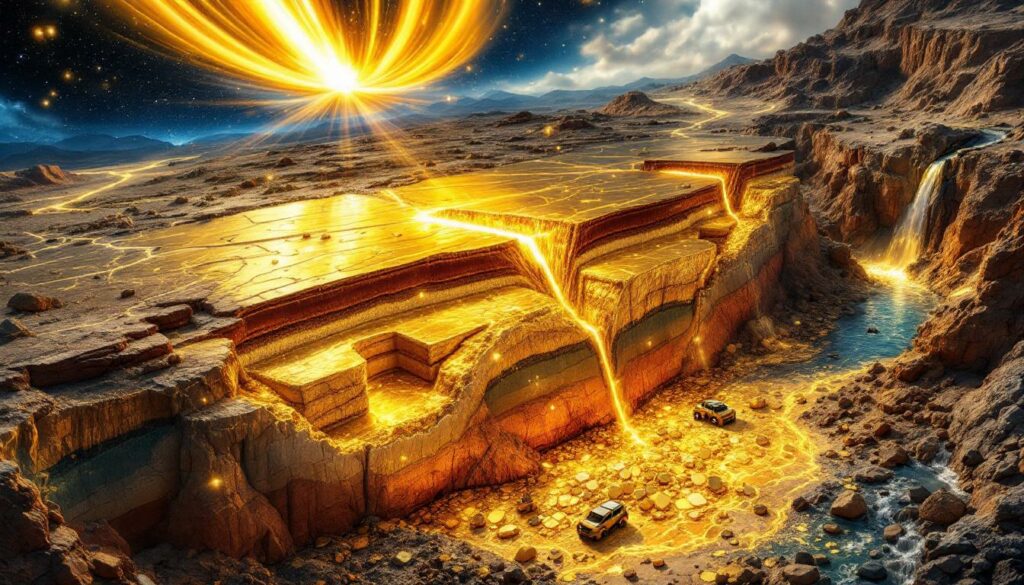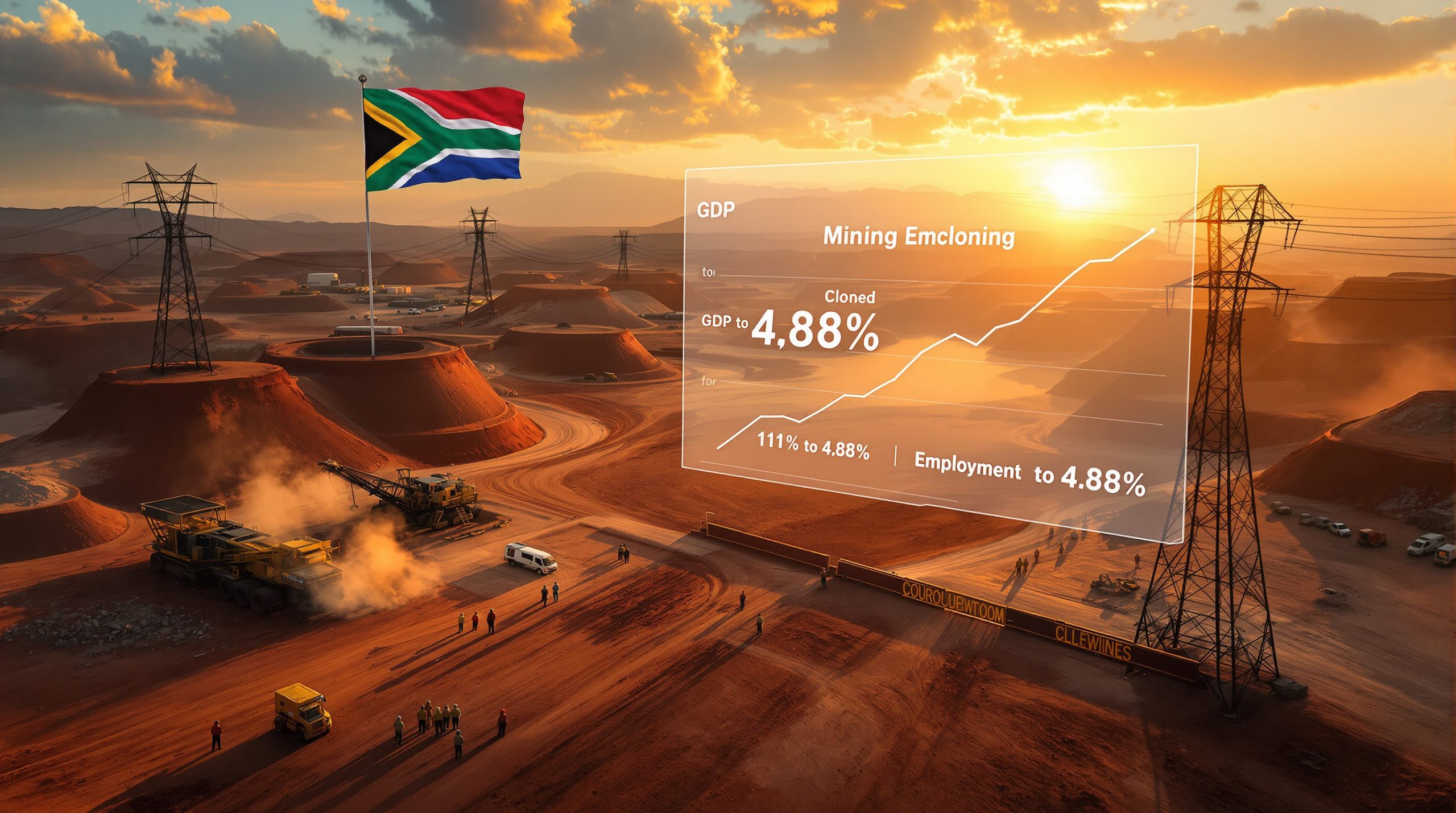What Are the Cosmic Origins of Gold?
Modern astrophysics suggests that most of the gold found on our planet was forged during cataclysmic events like neutron star collisions through a process known as rapid neutron capture or r-process nucleosynthesis. These cosmic collisions create the extreme temperatures and pressures necessary to form heavy elements like gold, which cannot be produced in regular stellar fusion.
During these violent cosmic events, temperatures reach billions of degrees, allowing atomic nuclei to rapidly capture neutrons before they can decay. This process builds heavier and heavier elements, including precious metals like gold and platinum. A single neutron star merger can produce an astonishing amount of gold—estimates suggest between 3-100 times Earth's mass in gold from just one such event.
"Neutron star mergers are like cosmic alchemy factories, producing gold and other precious metals," explains Dr. Enrico Ramirez-Ruiz of UC Santa Cruz, highlighting the extraordinary nature of these gold-creating events.
The 2017 detection of gravitational waves from a neutron star merger (GW170817) by LIGO and Virgo collaborations provided the first direct evidence of r-process nucleosynthesis, confirming theories about gold's cosmic origin.
The Stellar Birth of Precious Metals
Gold particles created in these stellar catastrophes were scattered across space, eventually becoming incorporated into the cloud of gas and dust that formed our solar system approximately 4.6 billion years ago. As Earth formed through accretion, these gold particles became part of our planet's primordial material.
What's remarkable is that during Earth's early formation, the planet was molten, allowing dense elements to sink toward the core. Gold, being a "siderophile" or iron-loving element, should have almost entirely migrated to Earth's core during this period of planetary differentiation.
Why then do we find gold in the crust? Research published in Nature suggests a "late veneer" theory—that gold and other precious metals arrived after Earth's core had substantially formed, through meteorite bombardment that added a thin layer of these elements to the already-differentiated planet.
Earth's Internal Distribution Process
Over the last 3 billion years, geological processes have worked to concentrate this sparse gold into the deposits we mine today. The primary mechanism responsible for this concentration is hydrothermal activity—where superheated water, often associated with volcanic or tectonic activity, dissolves tiny amounts of gold from source rocks and redeposits it elsewhere under different chemical conditions.
These gold-bearing fluids move through the crust along zones of weakness—faults, fractures, and contact zones between different rock types. When conditions change (temperature drops, pressure decreases, or chemical reactions occur), gold precipitates out of solution, often alongside quartz and various sulfide minerals.
The concentration factor is extraordinary—from less than 5 parts per billion in average crustal rocks to economically viable deposits containing 1-30 parts per million (a 1,000 to 10,000-fold increase).
Where Do Gold Deposits Typically Form?
Gold deposits form in specific geological environments where the right combination of source rocks, structural pathways, and precipitation mechanisms exist. Understanding these environments is crucial for exploration geologists seeking to locate new gold resources.
Greenstone Belts: Ancient Gold Repositories
Greenstone belts represent some of Earth's oldest crustal fragments, typically consisting of metamorphosed volcanic and sedimentary sequences that formed between 2.5 and 3.5 billion years ago. These ancient formations host many of the world's richest gold deposits.
The Abitibi greenstone belt spanning Ontario and Quebec in Canada has produced over 170 million ounces of gold since mining began in the early 20th century. Similarly, Western Australia's Yilgarn Craton hosts the famous Golden Mile (Kalgoorlie Super Pit), which has yielded more than 60 million ounces. South Africa's Barberton greenstone belt contains some of the oldest known rocks on Earth and significant gold mineralization.
"Greenstone belts are the world's premier gold-hosting terranes due to their unique Archean tectonic settings," notes Dr. Richard Goldfarb, whose research at the USGS has shaped our understanding of these deposits.
In these belts, gold is typically deposited in quartz-carbonate veins formed by hydrothermal fluids migrating along deep crustal faults. These veins often display distinctive textures, including ribboning, banding, and vugs (small cavities) that indicate episodic fluid flow and mineral precipitation.
Critical Structural Environments
Structural controls are paramount in gold deposit formation. Deep crustal faults serve as the primary conduits for mineral-rich solutions, creating narrow ore bodies that can extend for kilometers at depth. The world-class deposits at Timmins, Ontario follow the Destor-Porcupine Fault Zone for over 200 kilometers.
Gold shows a strong affinity for iron-rich host rocks, including:
- Basaltic volcanic rocks
- Ultramafic komatiites
- Banded iron formations (BIFs)
- Ferruginous sediments
The chemical interaction between gold-bearing fluids and these iron-rich rocks helps precipitate gold from solution. In the Homestake Mine of South Dakota, gold mineralization preferentially occurred within iron-rich layers of a metamorphosed banded iron formation, producing over 40 million ounces before its closure.
Zones of shearing, folding, and brecciation create increased rock permeability, allowing for greater fluid flow and more extensive mineralization. These deformed zones often develop during major tectonic events, such as continental collisions or subduction processes.
Intersection Zones and Deposition Points
The richest gold concentrations typically occur at geological intersections—where different structural features meet. Fault intersections, splays (where faults branch), and lithologic boundaries (contacts between different rock types) create focal points for mineralization.
Favorable alteration minerals provide important clues for explorers. The presence of sericite (fine-grained white mica), chlorite, and carbonates often indicates hydrothermal activity capable of transporting gold. These alteration halos can extend hundreds of meters beyond the actual gold mineralization, creating a larger target for exploration.
Pressure differentials in structural zones create ideal conditions for gold precipitation. As fluid moves from high-pressure to lower-pressure environments, dissolved minerals—including gold—become less soluble and precipitate out of solution. This mechanism explains why dilational zones in faults (areas where the fault opens slightly) often host particularly rich ore shoots.
Global gold market performance reflects the importance of these deposits—orogenic gold systems (including those in greenstone belts) account for approximately 75% of all lode gold ever mined.
How Does Placer Gold Form Through Secondary Processes?
Placer gold deposits represent nature's own concentration method, where the heavy, resistant properties of gold allow it to accumulate in specific environments after being liberated from its original source rock.
Weathering and Transport Mechanisms
The journey of placer gold begins with the weathering of primary gold deposits. Over thousands to millions of years, chemical and physical weathering processes attack gold-bearing rocks, gradually breaking them down and liberating gold particles. Unlike many minerals, gold resists chemical weathering due to its noble metal properties, remaining relatively unchanged even as the surrounding rock decomposes.
Once freed from its host rock, gold enters the transport phase. Its high density (19.3 g/cm³, roughly 7 times denser than quartz) means it resists being carried away by water. Instead, gold particles tend to settle quickly in stream environments, working their way downward through sediments until they encounter bedrock or other barriers.
"Understanding fluvial geomorphology is critical for locating placer deposits," the experts note. River systems have predictable patterns of erosion and deposition that control where heavy minerals like gold will accumulate.
Water velocity plays a crucial role in this process. Gold particles will move during high-energy events (floods) but settle quickly when energy decreases. This stop-and-go movement creates a natural sorting mechanism that concentrates heavy minerals together.
Key Depositional Environments
Placer gold accumulates in predictable locations within stream systems:
- Inside bends of rivers – As water slows on the inside of meanders, heavy particles settle out
- Behind natural obstructions – Boulders, log jams, and bedrock outcrops create low-energy "shadow zones"
- Downstream from waterfalls and rapids – The sudden decrease in velocity causes gold deposition
- Within natural riffles – Irregularities in bedrock create natural traps
- In crevices and fractures – Gold particles work their way into bedrock cracks
Modern placer mining operations target these depositional environments, with recovery rates ranging from 50-90% depending on the technology employed. Hydraulic equivalence causes gold to settle alongside other heavy minerals like magnetite, hematite, and garnet, creating distinctive "black sand" concentrations that prospectors use as indicators.
Ancient River Systems and Paleoplacers
Perhaps the most fascinating aspect of placer gold formation is that this process has occurred throughout Earth's history. Ancient river systems, now lithified into rock, contain some of the world's richest gold deposits.
The Witwatersrand Basin in South Africa represents the ultimate example of a preserved paleoplacer system. This massive geological feature covers an area of approximately 350 km by 200 km and has produced over 1.5 billion ounces of gold—roughly 40% of all gold ever mined on Earth.
"Paleoplacers like Witwatersrand are time capsules of Earth's ancient surface processes," explains Dr. John D. Ridge, highlighting their unique geological significance.
What makes the Witwatersrand truly remarkable is its age—forming approximately 2.8 billion years ago when Earth's atmosphere contained little oxygen. This allowed the preservation of both gold and uranium minerals in the same sedimentary environment, creating an unprecedented mineral deposit.
More recent paleoplacers include those of the Sierra Nevada foothills in California, which triggered the famous gold rush of 1849, and the buried Tertiary channels of Australia's Victorian goldfields, which required elaborate shaft and tunnel systems to access.
What Field Indicators Suggest Hidden Gold Deposits?
For geologists and prospectors seeking hidden gold in geological formations, recognizing subtle clues in the field can mean the difference between success and failure. While gold itself is rarely visible at the surface of unexplored deposits, a range of visual and mineralogical indicators can point to its presence.
Visual and Mineralogical Clues
Quartz veins represent the most obvious visual indicator of potential gold mineralization. Not all quartz veins contain gold, but certain textures increase the probability:
- Banding or ribboning – Parallel layers indicating multiple fluid events
- Open-space textures – Vugs and cavities suggesting favorable conditions for mineral precipitation
- Sulfide inclusions – Particularly pyrite, arsenopyrite, and chalcopyrite
- Comb or cockade structures – Indicating progressive growth into open spaces
The presence of pathfinder minerals often signals proximity to gold mineralization. Pyrite (fool's gold) is the most common associate, and can contain microscopic "invisible gold" at concentrations ranging from 0.1-5 g/t. Other important indicators include:
- Arsenopyrite – Strongly associated with gold in many deposit types
- Chalcopyrite – Copper sulfide common in many gold systems
- Galena – Lead sulfide often found in epithermal gold deposits
- Sphalerite – Zinc sulfide indicating hydrothermal activity
Alteration halos surrounding mineralized zones provide a larger exploration target. As hydrothermal fluids interact with wall rocks, they create distinctive mineral assemblages that extend well beyond the actual gold mineralization—sometimes hundreds of meters. These altered zones show subtle changes in rock color, texture, and chemistry that trained geologists can recognize.
Hydrothermal Alteration Signatures
Different styles of hydrothermal alteration provide important clues about the type and proximity of gold mineralization:
Silicification transforms host rock into hard, glassy material as silica-rich fluids deposit quartz throughout the rock matrix. This creates resistant outcrops that often stand out in the landscape. The intensity of silicification typically increases with proximity to mineralization.
Sericitization produces soft, micaceous rock as feldspars and other minerals convert to fine-grained white mica (sericite). This gives the rock a distinctive silky sheen and often imparts a pale green to white color. Sericitization commonly occurs in the outer zones of porphyry and epithermal gold systems.
Iron oxidation creates reddish or yellowish staining from the breakdown of sulfide minerals. While "rusty" rocks can form through many processes, systematic iron staining along structural features often indicates sulfide mineralization at depth. The distinctive "gossan" formed above sulfide bodies has guided prospectors for centuries.
The spatial patterns of these alteration types relative to faults and different rock types (lithology) help geologists vector toward mineralization. Modern exploration programs use detailed mapping of alteration minerals to identify the "sweet spot" where gold deposition likely occurred.
Epithermal Vein Systems
Epithermal deposits form at relatively shallow depths (within 1.5 km of the surface) and moderate temperatures (150-300°C), typically in volcanic environments. These systems have distinctive characteristics that make them identifiable even when gold itself isn't visible:
- Banded veins with colloform textures resembling layers or ribbons
- Bladed calcite textures, often replaced by quartz, indicating boiling conditions
- Adularia (potassium feldspar) in veins, another indicator of boiling
- Breccias cemented with quartz, often containing rock fragments in a matrix of fine-grained quartz
Low-sulfidation epithermal systems, which host some of the world's highest-grade gold deposits, form in neutral to slightly alkaline conditions and often produce distinctive textures like "ginguro bands"—dark, metal-rich layers within otherwise white quartz veins.
In the Round Mountain deposit in Nevada, which has produced over 15 million ounces of gold, classic epithermal textures guided exploration despite initially modest gold values at the surface. The recognition of these systems has revolutionized gold exploration in volcanic terranes worldwide.
How Has Gold Exploration Evolved?
Gold exploration has transformed dramatically over the past century, evolving from prospectors with pick and pan to sophisticated multi-disciplinary teams using advanced technologies. This evolution reflects both technological innovation and deeper understanding of the geological processes that create gold deposits.
Integration of Modern Technologies
Today's exploration programs leverage a diverse toolkit of remote sensing and analytical technologies:
Airborne geophysical surveys can rapidly cover large areas, collecting magnetic, electromagnetic, and radiometric data that reveals hidden geological structures. Modern systems can survey 500-1000 line-kilometers daily at costs ranging from $50-150 per line-kilometer, generating detailed maps of subsurface features without a single boot on the ground.
Hyperspectral imaging analyzes reflected light across hundreds of narrow wavelength bands, identifying specific minerals based on their spectral signatures. Satellite-based systems can map alteration minerals with 30-meter resolution, while drone-mounted systems achieve centimeter-scale detail, precisely mapping alteration zones associated with gold deposits.
Portable X-ray fluorescence (XRF) analyzers provide near-instant elemental analysis in the field. These handheld devices, which cost $30,000-50,000, can detect pathfinder elements like arsenic, antimony, and mercury in seconds, allowing geologists to make real-time decisions during sampling programs.
"Integration of multidisciplinary data is key to reducing exploration risk," notes Dr. Mark Smyth, whose consulting work has guided numerous successful exploration campaigns. "The companies that excel combine technological sophistication with fundamental geological understanding."
Machine learning and artificial intelligence represent the newest frontier, with algorithms trained to recognize patterns in integrated datasets that might escape human analysis. These systems can process massive amounts of geological, geochemical, and geophysical data to identify subtle patterns associated with mineralization.
Fundamental Geological Principles
Despite technological advances, successful gold exploration still hinges on understanding the fundamental geological controls on mineralization:
Structural geology remains the cornerstone of gold exploration, as most deposits form along faults, shear zones, and other structural pathways. Detailed mapping of these features, both at surface and in drill core, guides the search for ore-bearing zones.
Host rock lithology dramatically influences gold deposition. Certain rock types—iron-rich basalts, carbonaceous sediments, and chemically reactive limestone—create favorable chemical environments for gold precipitation. Understanding these lithological controls helps focus exploration on the most prospective rock units.
Fluid pathway analysis traces the journey of gold-bearing solutions through the crust. By reconstructing ancient hydrothermal systems, geologists can predict where gold deposition was most likely to occur.
The integration of these fundamental principles with modern technology has improved exploration success rates, with industry figures suggesting an increase from approximately 1:1000 to 1:500 for the ratio of targets to discoveries.
Geological Storytelling in Exploration
Modern geologists work not just to discover gold, but to understand the complete geological narrative behind each deposit. This "geological storytelling" approach reconstructs the sequence of events that created a mineral system:
- Source – What process generated gold-bearing fluids?
- Transport – How did these fluids move through the crust?
- **
Want to Spot the Next Major Mineral Discovery?
Discovery Alert's proprietary Discovery IQ model instantly analyses ASX announcements to identify significant mineral discoveries before the broader market reacts. Explore how historic discoveries have generated substantial returns by visiting our dedicated discoveries page and begin your 30-day free trial today to gain that crucial market advantage.




